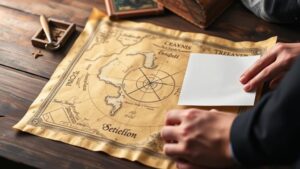The Search for the Nazi Gold Train: Urban Legends Drive Investigations in Poland’s Mountains
The Search for the Nazi Gold Train: Urban Legends Drive Investigations in Poland’s Mountains
The legend of the Nazi gold train has captured the imagination of treasure hunters, historians, and the general public alike, serving as a compelling narrative that intertwines history, mystery, and the enduring impact of World War II. Set against the backdrop of Polands Sudeten Mountains, the quest to unearth this elusive train has inspired more than urban myths; it has spurred scientific inquiries and archaeological explorations seeking to verify claims that a train laden with stolen treasures is buried beneath layers of rock and soil. This article delves into the origins, theories, and contemporary investigations surrounding the fabled Nazi gold train, illuminating the intersection of folklore and the historical record.
Historical Context: The End of WWII and the Nazi Plunder
As World War II drew to a close, the Nazis were in retreat across Europe, leading to the emergence of a chaotic scene where valuables were hidden or transported in an effort to evade capture. Gold, art, and various assets amassed through years of brutal occupation were often concealed in makeshift caches. Poland, with its rich cultural heritage and historical treasures, became one of the primary locations for this illicit activity.
One prominent story suggests that in 1945, as Soviet forces advanced, a train filled with stolen goods was sent from Breslau (modern-day Wrocław) toward the German border. The assumption is that this train disappeared into the mountains and has never been recovered, sparking legends that it might be buried in a secret tunnel or cave.
The Unraveling Myths: Urban Legends as Catalysts
Urban legends surrounding the Nazi gold train have evolved over time, fueled by anecdotal evidence and tales passed down through generations. Some of the notable claims include:
- Reports from local residents claiming to have witnessed the trains passage shortly before its purported disappearance.
- Stories of soldiers and prisoners of war encountering hidden caches in nearby caves or tunnels.
- Claims by treasure hunters who assert to have found clues leading to the trains location, only to be thwarted by authorities.
These narratives often capitalize on the collective trauma and historical anxiety surrounding World War II, transforming folklore into a powerful driver of investigation.
Modern Investigations and Archaeological Studies
In recent years, the search for the Nazi gold train has garnered renewed interest, leading to a series of investigations by both amateur treasure hunters and professional archaeologists. Some notable endeavors include:
- The 2015 announcement by two men claiming they had located the train near Wałbrzych, which prompted an archaeological survey supported by the Polish government.
- The involvement of technology such as ground-penetrating radar (GPR) to locate potential buried objects, suggesting that scientific methods play an essential role in modern treasure hunts.
- Publicized expeditions involving geologists and historians who seek to validate claims through rigorous research and physical exploration.
Researchers have utilized historical maps and documents to identify potential routes taken by the train and search for discrepancies in historical records to pinpoint locations that merit further investigation.
Concrete Examples and Case Studies
A significant case study includes the 2016 excavation of a site near the village of Minkowskie, where much buzz had been generated about a possible find. This excavation, however, yielded no evidence of the train, reinforcing the skepticism among professional archaeologists regarding the existence of such a cache. Despite this, the site attracted attention, exemplifying both the allure of the legend and the challenges of verification.
Another instance highlighted the engagement of remote sensing technology and professional mining equipment by local authorities aiming to investigate the WÅ‚odarz tunnels, which were rumored to house the gold train. Initial evaluations did suggest some anomalies suggesting underground structures; however, no definitive evidence has emerged to date.
Addressing Skepticism and Theoretical Limitations
While the search for the Nazi gold train remains one of intrigue, it is essential to approach this narrative with skepticism. There are several challenges that observers and researchers face:
- Lack of Documentation: Much of the supporting evidence consists of anecdotal accounts that do not stand up to rigorous historical scrutiny.
- Potential for Misinformation: Some claims may have been perpetuated for personal gain or sensationalism, complicating investigations.
- High Expectations vs. Reality: While stories often promise great riches, the reality of land excavation yields mixed results, regularly ending in disappointment.
This skepticism is not a dismissal of the desire to seek historical treasures but rather a call to ground future searches in solid archaeological methodologies and documentation.
Conclusion: The Allure of the Legend
The search for the Nazi gold train showcases how urban legends can inspire exploration and curiosity, bridging gaps between history and modern investigation. While many tales may ultimately lead to dead ends, the legendary allure of hidden treasures continues to thrive, alongside rigorous academic inquiry. For anyone intrigued by this enigma, the key takeaways entail recognizing the importance of historical accuracy, leveraging scientific methods in exploration, and embracing the stories that form part of our collective past, regardless of their veracity.



